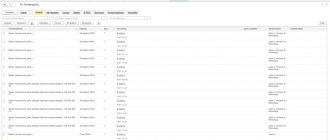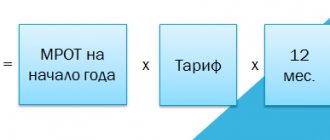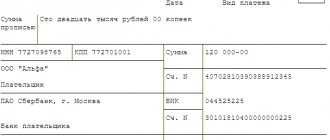Who can apply the reduced contribution rate
During 2017–2018, those employed in the production and social spheres and listed in subparagraph 5 of paragraph 1 of Article 427 of the Tax Code pay insurance contributions only for compulsory pension insurance at a rate of 20% (subparagraph 3. paragraph 2 of article 427 of the Tax Code of the Russian Federation ).
If a “simplified” beneficiary’s amount of payments in favor of an employee, calculated on an accrual basis from the beginning of the year, exceeds the income limit (in 2021 – 876,000 rubles), insurance premiums are not charged for the amount of such excess.
The category of beneficiaries includes, in particular, companies:
- producing food products, textiles, footwear, furniture, vehicles and equipment;
- carrying out scientific research and development;
- engaged in the repair of household products and vehicles;
- conducting activities in the field of education, healthcare, construction, provision of social services, transport and communications;
- retail traders of pharmaceutical, medical and orthopedic products;
- producing furniture;
- producing sporting goods, games and toys.
Such activity must be the main one, that is, the share of income from the sale of products or services provided must be at least 70% of the total income (clause 6 of Article 427 of the Tax Code of the Russian Federation). In addition, the total annual income of a “simplified” person should not exceed 79 million rubles (clause 3, clause 2, article 427 of the Tax Code of the Russian Federation). The amount of income is determined according to the rules of Article 346.15 of the Tax Code.
And finally, the type of activity code according to OKVED must correspond to the preferential type of business.
Read also “Preferential tariff for insurance premiums: check OKVED”
EXAMPLE.
HOW TO CALCULATE PENSION CONTRIBUTIONS AT A REDUCED TARIFF UNDER THE STS A company that uses the simplified tax system produces office furniture (OKVED code 31.01). Income from this production exceeds 70% of the company's total income, so furniture production is its main activity. For 6 months of the company’s activity, the total amount of its income amounted to 15,000,000 rubles, which is less than the maximum permissible value of 79,000,000 rubles. Consequently, the organization is included in the list of “simplified” beneficiaries listed in paragraphs. 5 p. 1 art. 427 of the Tax Code of the Russian Federation and those entitled to a reduced rate of insurance premiums. The company’s employees received a salary for June in the amount of 300,000 rubles. From the amount of these payments, the organization will pay insurance pension contributions in the amount of 60,000 rubles. (RUB 300,000 × 20%).
If the income of a “simplified” person from a preferential type of activity is less than 70% or exceeds the limit of 79,000,000 rubles, he will have to switch to paying contributions at the general rate.
“Simplified” people can confirm the benefit with the following documents:
- application for transition to the simplified tax system (form 26.2-1);
- a copy of the tax return according to the simplified tax system with a mark from the tax office on acceptance:
- a copy of the income and expense ledger;
- breakdown of income by type of income (certificate of the organization, certificate confirming the main type of economic activity).
Contributions that an individual entrepreneur pays for himself
An individual entrepreneur working on the simplified tax system must pay contributions to compulsory medical insurance and compulsory health insurance (clauses 1, 6, article 430 of the Tax Code of the Russian Federation). The amount of contributions to compulsory pension insurance depends on the amount of income received by the individual entrepreneur, but not directly (subclause 1, clause 1, article 430 of the Tax Code of the Russian Federation).
So, with an income of up to 300,000 rubles. for the year, the annual amount of fixed insurance premiums (FIF) is equal to:
- in 2021 - 32,448 rubles;
- in 2021 - RUB 32,448.
IMPORTANT! Individual entrepreneurs from the affected industries reduced contributions to compulsory pension insurance for 2020 by 12,130 rubles. See here for details.
From the amount of income exceeding 300,000 rubles, an additional 1% must be paid to the compulsory pension insurance, but the total amount of payments (including the fixed part) should not exceed 8 times the size of the Fund of Funds in the Pension Fund (for 2021 - 2021 - 259,584 rubles) .
The individual entrepreneur's payment for compulsory health insurance (CHI) is fixed and equal to (subclause 2, clause 1, article 430 of the Tax Code of the Russian Federation):
- in 2021 - 8,426 rubles;
- in 2021 - 8,426 rubles.
For periods (year and month) that turn out to be incomplete for an individual entrepreneur who began or completed activities in them, the calculation uses coefficients that take into account the share of months of activity in the total number of months in the year and a similar share of the number of days in the total number of days of the corresponding month (pp. 3, 5, Article 430 of the Tax Code of the Russian Federation).
ConsultantPlus experts explained in detail how individual entrepreneurs can calculate and pay fixed payments for insurance premiums. Get free demo access to K+ and go to the Ready-made solution to find out all the details of this procedure.
How to determine the main activity
To receive benefits, only one type of activity can be the main one for the simplified person. The summing of income from different types of activities (that is, those belonging to different classes of OKVED) is not provided for by law (letters of the Ministry of Labor of Russia dated September 29, 2015 No. 17-4/10/OOG-1357, dated September 18, 2014 No. 17-4 /B-442).
For example, the preferential types of activities of a “simplified” worker belong to different classes of OKVED, but the income for none of them separately exceeds 70% of the total income. In this case, reduced contribution rates cannot be applied.
But if the types of activities belong to the same OKVED class, the “simplified” can summarize the income received. And if it turns out that the total income from activities combined into one class according to OKVED exceeds the 70% barrier, the company has the right to apply a reduced tariff (letter of the Ministry of Labor of Russia dated April 3, 2013 No. 17-4/551).
Loss of the right to a reduced rate of insurance premiums
loses the right to apply reduced tariffs if, at the end of the reporting period, the main type of its economic activity does not correspond to that initially declared. Or if its annual revenue exceeds 79 million rubles.
In this case, the company will have to recalculate contributions at the generally established rate from the beginning of the quarter in which this discrepancy occurred (clause 6 of Article 427 of the Tax Code of the Russian Federation).
The restored amount of insurance premiums is transferred to the budget. In this case, you do not need to pay penalties.
This is explained by the fact that the restored amount of insurance premiums is not an additional payment due to incomplete payment of insurance premiums on time. After all, in previous periods the reduced tariff was applied lawfully. This means that there are no grounds for accruing penalties.
Insurance premiums for “simplified”
Since 2011, the majority of companies using special regimes do not have reduced insurance premium rates. What about travel agencies? Let's figure out whether they can save on insurance premiums, as well as how and within what time frame they need to report on accrued and paid amounts.
Rates in 2011
As a general rule, travel agencies, like other organizations using a special regime, have not been able to apply reduced rates since 2011 - for them, Federal Law No. 212-FZ of July 24, 2009 no longer provides for preferential rates. At the same time, Article 58 of Law No. 212-FZ provides for transitional provisions for the payment of contributions, which, among other things, provides for benefits in 2011–2012 for a number of organizations using the “simplified tax system” (clause 3.2 of Article 58 of Law No. 212-FZ). However, they can only be used by those companies whose main activity is specified in paragraph 8 of part 1 of Article 58 of Law No. 212-FZ.
But, unfortunately, the types of activities in the field of tourism are not named there. Therefore, generally accepted contribution rates apply to travel agencies (the total tariff in 2011 is 34%). In accordance with Article 12 of Law No. 212-FZ, rates for funds are distributed as follows:
– to the Pension Fund of the Russian Federation – 26 percent;
– in the Federal Social Insurance Fund of Russia – 2.9 percent;
– in the Federal Compulsory Medical Insurance Fund – 3.1 percent;
– in TFOMS – 2 percent.
However, reduced rates may still apply to some travel agency payment categories. Thus, in relation to payments to disabled people, rates of 20.2 percent are applied (clause 3, part 1, part 2, article 58 of Law No. 212-FZ). Let us note that if until 2011 contributions in relation to such accruals were paid only to the Pension Fund of the Russian Federation, then since 2011 contributions are provided for all funds:
– to the Pension Fund of the Russian Federation – 16 percent;
– in the Federal Social Insurance Fund of Russia – 1.9 percent;
– in the Federal Compulsory Medical Insurance Fund – 1.1 percent;
– in TFOMS – 1.2 percent.
Let us remind you that insurance contributions to the Pension Fund for the funded part of the pension from the income of workers who were born in 1967 and later are charged at a rate of 6 percent, and for the insurance contribution - in the amount of 20 cents (for payments to disabled people - 10%). And for specialists who were born in 1966 and earlier, contributions in full are charged to the insurance part of the pension, that is, in the amount of 26 or 16 percent (in relation to payments to disabled people).
Filling out reports
The amount of payments to employees and contributions accrued from them must be reported to the Federal Social Insurance Fund of Russia and the Pension Fund of the Russian Federation.
From the reporting for the first quarter of 2011, a calculation is submitted to the FSS of Russia according to FSS Form-4, which was approved by order of the Ministry of Health and Social Development of Russia dated February 28, 2011 No. 156n. Well, the Pension Fund is provided quarterly with individual (personalized) accounting information, as well as calculations in the RSV-1 Pension Fund form, approved by order of the Ministry of Health and Social Development of Russia dated November 12, 2009 No. 894n (as amended by order of the Ministry of Health and Social Development of Russia dated January 31, 2011 No. 54n ). The last day for submitting reports to the Pension Fund for the first quarter is May 16, 2011 (information message of the Pension Fund of the Russian Federation dated March 21, 2011).
Moreover, the calculation of the RSV-1 Pension Fund and individual information must be submitted in one shipment. We will dwell in more detail on reporting to the Pension Fund.
Calculation of RSV-1 PFR
So, you need to report for the first quarter using the updated calculation form.
The changes are related to the addition of a new subsection 4.4 to Section 4 “Grounds for the application of a reduced tariff”, which indicates the grounds for the application of reduced rates established by Part 3.2 of Article 58 of Law No. 212-FZ (organizations on the “simplified” for certain types of OKVED). Therefore, there will generally be no difficulties when filling out reports. When entering data in section 2 “Calculation of insurance premiums according to the tariff established for payers of insurance premiums” in the “Tariff Code” cell, travel agencies using the simplified procedure must indicate “51” (when filling out reports for 2010, “05” was indicated here). When filling out this section on contributions to the Pension Fund, lines are separately allocated (in addition to dividing by year of birth) to indicate amounts not subject to contributions on three grounds: 1) state benefits, compensation payments and expenses for business trips of employees - lines 210–212 (part 1 , 2 Article 9 of Law No. 212-FZ);
2) payments in favor of full-time students in educational institutions of secondary and higher vocational education for activities in a student group under labor or civil contracts for the performance of work and (or) provision of services - lines 214–215 (clause 1, p. 3 Article 9 of Law No. 212-FZ);
3) amounts exceeding the maximum base for calculating insurance premiums - lines 216–218 (Parts 4, 5, Article 8 of Law 212-FZ). >>For 2011, the maximum base for calculating insurance premiums is set at 463,000 rubles. (Resolution of the Government of the Russian Federation of November 27, 2010 No. 933). |
Moreover, on the second basis (if any work or services to the travel agency are provided by students), contributions are not charged only to the Pension Fund; they are paid to the compulsory medical insurance funds in the generally established manner.
The subsection “In relation to payments in favor of employees who are disabled people of group I, II or III” of section 3 “Calculation of insurance premiums at a reduced rate in relation to individual employees” is filled out in the same way. However, in addition to this, you will also need to fill out Section 4 “Grounds for applying a reduced tariff.” In subsection 4.1 “Information required to apply the reduced tariff...” indicate the serial number, full name. disabled employee, the date of issue and expiration of the certificate from the medical and social examination institution, VTEC, the amount of payments to each such employee (total from the beginning of the billing period, of which - for the last three months of the reporting period).
Please note: reduced insurance premium rates for payments to disabled people apply from the 1st day of the month in which the employee received disability. If, as a result of examination (re-examination), an employee loses the right to receive disability within a month, then from the 1st day of the same month, contributions must be calculated at generally established rates. This follows from the explanations of officials given in the letter of the Ministry of Health and Social Development of Russia dated June 22, 2010 No. 1977-19.
Individual information
As we have already noted, along with the calculation of RSV-1 PFR, the travel agency needs to provide information about each insured person working for it (clause 1, part 9, article 15 of Law No. 212-FZ).
The procedure for the formation and presentation of information is established by Federal Law No. 27-FZ of April 1, 1996 “On individual (personalized) registration in the compulsory pension insurance system.” Information can be sent both in the form of documents in written form and in electronic form, provided there are guarantees of their accuracy and protection from unauthorized access and distortion (clause 2 of Article 8 of Law No. 27-FZ).
>|The electronic form of submission of information involves the submission of information on magnetic media or using public information and telecommunication networks, including the Internet, including a single portal of state and municipal services (clause 2 of Article 8 of Law No. 27-FZ). |< When submitting information for 50 or more employees (including those who have entered into contracts of a civil law nature, for which remuneration contributions are calculated), they are submitted according to the forms established by the Pension Fund of the Russian Federation in electronic form (determined by the Pension Fund of the Russian Federation).
Documents in electronic form containing individual information must be certified with an electronic digital signature in accordance with Federal Law of January 10, 2002 No. 1-FZ “On Electronic Digital Signature”. When submitting information in electronic form, the Pension Fund sends the travel agency confirmation of receipt of the specified information in the form of an electronic document.
In accordance with Article 11 of Law No. 27-FZ, a travel agency provides the following information about each insured person working for it (including those with whom civil contracts have been concluded, for which remuneration is charged):
1) insurance number of an individual personal account;
2) Full name;
3) the date of hiring (if hired during the reporting period) or the date of concluding a civil contract for which contributions are calculated;
4) the date of dismissal (if dismissed during the reporting period) or the date of termination of a civil contract for which insurance premiums are calculated;
5) periods of activity included in the length of service in the relevant types of work, determined by special working conditions, work in the Far North and equivalent areas;
6) the amount of earnings (income) on which compulsory pension insurance contributions were calculated;
7) the amount of accrued compulsory pension insurance contributions;
 other information necessary for the correct assignment of a labor pension.
other information necessary for the correct assignment of a labor pension.
Together with the specified information, they provide information on accrued and paid insurance premiums in general for all insured persons working in the travel agency. The following forms are provided for submitting information: ADV-6-2, SZV-6-2, ADV-6-3, SZV-6-1.
>|Forms of individual (personalized) accounting documents and instructions for filling them out were approved by Resolution of the Board of the Pension Fund of the Russian Federation dated July 31, 2006 No. 192p. |
Important to remember
In 2011, the total tariff for insurance premiums for tours was 34 percent.
The general contribution rate for payments to disabled people will be 20.2 percent. Moreover, contributions in this case must be paid to all funds. Information on accrued contributions for the first quarter of 2011 must be submitted to the Pension Fund no later than May 16, 2011. The article was published in the journal “Accounting for Tourist Activities” No. 5, May 2011.
Loss of the right to the simplified tax system
If the payer of the simplified tax system applied a preferential tariff for insurance premiums, but lost the right to the simplified tax system, he is obliged to recalculate contributions according to general tariffs and make an additional payment. Penalties are not charged in this case (letter of the Ministry of Labor of Russia dated April 21, 2015 No. 17-4/B-595). Insurance premiums are recalculated from the beginning of the quarter in which the conditions for applying the simplified tax system were violated (for example, the company’s income exceeded the permissible limit).
As in the case of loss of the right to a preferential tariff, this amount of recalculation of contributions is not an additional payment due to their incomplete payment on time. Since the organization, in the period in which the detected violation occurred, lawfully transferred insurance payments at a reduced rate, in accordance with the conditions for applying the simplified tax system. Therefore, no penalties are paid when recalculating contributions.
Accounting in 1C
Setting up the application of reduced tariffs
Set the application of reduced insurance premium rates in the Main section - Taxes and reports - Insurance premiums tab.
Please indicate:
- Insurance premium rate - For small or medium-sized businesses .
- Apply from - April 2020 .
Click OK .
The result of the settings made can be checked using the link History of changes .
If wages for April 2021 were accrued before the settings for reduced insurance premiums were made, the Salary Accrual should be refilled using the Fill and then completed again. Just redoing it is not enough!
Calculation of contributions
In June, the Organization accrued salaries to three employees:
- Ivanov R.N. - full time, salary 20,000 rubles. accrued in full;
- Ignatov P.S. - part-time (0.5 rate), salary 20,000 rubles, accrued 10,000 rubles.
- Trifonova A.G. - external part-time worker, part-time, salary 20,000 rubles, accrued in June 10,000 rubles.
From the month specified in the Insurance premium , in the Payroll , contributions are calculated at the new rates.
If an employee receives an amount less than the minimum wage per month (for example, when working part-time), the normal insurance premium rate of 30% is used.
Reduced rates for insurance premiums are used for payments exceeding the minimum wage established by federal law at the beginning of the billing period. Adjustment of the minimum wage for the number of positions held by an employee is not provided (Clause 9, Article 2, Article 6 of the Federal Law of 04/01/2020 N 102-FZ).
However, the calculation is not detailed in the document.
It is convenient to control the accrual of contributions using the Analysis of Contributions to Funds (section Salaries and Personnel - Salary Reports), having configured it in a special way.
Checking the accrual of contributions
Create a report Analysis of contributions to funds (section Salaries and personnel - Salary reports).
By default, the report grouping is set by type of contributions by Accrual . However, the salary limit is determined for each employee, so to check, group by Employee .
To do this, click More - Other - Change report option to open the settings change form.
Accrual field Edit grouping fields form and change the grouping in it to Employee .
As a result of the settings, the data will be grouped by employees.
Let's check the calculation made by the program using the example of contributions to the Pension Fund.
Employee Accrued within the minimum wage Accrued over the minimum wage Accrued by the Pension Fund (basic tariff 22%) Pension Fund accrued (reduced tariff 10%) Ivanov R. N. 12 130 7 870 2 668,60 787 Ignatov P.S. 10 000 0 2200 0 Trifonova A. G. 10 000 0 2200 0 Our calculation coincides with the one executed by the program. The remaining contributions are calculated similarly. PDF
Saving a report
Save the report option using the Report options - Save report option button.
In the form that opens, indicate the name and availability of the report.
How to calculate insurance premiums at a preferential rate for small businesses under a GPC agreement
Step 1. Complete the settings to install a reduced tariff.
Step 2. Enable the option of accounting for civil partnership agreements in the Main - Functionality section.
On the Employees , select the Contract agreements .
Step 3. Draw up a contract agreement with the employee (Salaries and personnel - Employees - follow the link Contract or Salaries and personnel - Contract agreements - Create).
Fill out all the details of the Contract Agreement .
Step 4. Complete the accrual under the contract (Salaries and personnel - All accruals - Create - Payroll - Fill out).
Insurance premiums are calculated at reduced rates for a given employee based on all accruals for the month.
Let's check the calculation:
- Contributions to the Pension Fund = 12,130 * 22% + 2,870 * 10% = 2,955.60 rubles.
- Contributions to the FFOMS = 12,130 * 5.1% + 2,870 * 5% = 762.13 rubles.
The calculation in the program coincides with our calculation.
See also:
- Setting up accounting policies for NU in 1C: Insurance premiums
Did the article help?
Get another secret bonus and full access to the BukhExpert8 help system for 14 days free of charge
Related publications
- Lowering the Central Bank refinancing rate (3.1.2.153) ...
- Checking the calculation of insurance premiums above the limit for SMEs from 04/01/2020...
- Tariff of insurance premiums for SMEs from 04/01/2020 (ZUP 3.1.10.378 / 3.1.13.151) You do not have access to view. To gain access: Complete...
- Zero insurance premium rate for the 2nd quarter of 2021 for affected SMEs (ZUP 3.1.10.444/3.1.13.120) You do not have access to view. To gain access: Complete...
Preferential tariffs when combining simplified taxation system and UTII
The combination of two special regimes - simplified tax system and UTII - is permitted by tax legislation. If a “simpler” who has the right to a preferential rate of insurance premiums is still carrying out activities transferred to UTII, he will not lose the right to the benefit if the share of income from the main activity is 70% or more of the total income.
For example, a company combines the simplified tax system and UTII. Moreover, the main type of activity from which it receives more than 70% of its income is imputation. If this type of business is listed in the list of preferential types of activities (clause 5, clause 1, Article 427 of the Tax Code of the Russian Federation), then the “simplified” person can pay insurance premiums at a reduced rate in relation to the “imputed” activity.
However, in this case, the second criterion - based on the total amount of income for the year, which should not exceed 79 million rubles - is determined for all types of activities (both simplified taxation system activities and “imputation”).
The situation is different if a company or individual entrepreneur applies only UTII in relation to a preferential type of activity. In this case, she cannot count on benefits in the form of reduced insurance premium rates (letter of the Ministry of Finance of Russia dated April 3, 2021 No. 03-15-06/19230). This is due to the fact that there are no provisions in the Tax Code that would establish reduced insurance premium rates only for “imputed” people. Therefore, organizations and individual entrepreneurs on UTII, engaged, for example, in the maintenance and repair of cars, cannot apply reduced insurance premium rates.
Who can work for the simplified tax system and do “simplified” workers pay insurance premiums?
The possibility of using the simplified taxation system (STS) is available to legal entities and individual entrepreneurs that meet certain restrictions established by Art.
346.12 Tax Code of the Russian Federation. These restrictions also include engaging in certain types of activities. At the same time, most existing types of activities can be transferred to the simplified tax system. Read about the conditions for applying the simplified tax system in 2021 here.
The presence of hired personnel in organizations and individual entrepreneurs allows them to be regarded as persons who pay remunerations and are obliged to pay insurance premiums from these remunerations (subparagraph 1, paragraph 1, article 419 of the Tax Code of the Russian Federation, article 3 of the law “On Compulsory Social Insurance...” dated July 24, 1998 No. 125-FZ).
An individual entrepreneur may not have employees and, accordingly, will not pay remuneration to them. But he must also pay contributions (subclause 2, clause 1, article 419 of the Tax Code of the Russian Federation), although in a different order from that which applies to hired employees (Articles 421, 422, 430 of the Tax Code of the Russian Federation).
An individual entrepreneur with employees will have to pay contributions simultaneously on 2 grounds (clause 2 of Article 419 of the Tax Code of the Russian Federation):
- for myself;
- from the remuneration of these employees.





